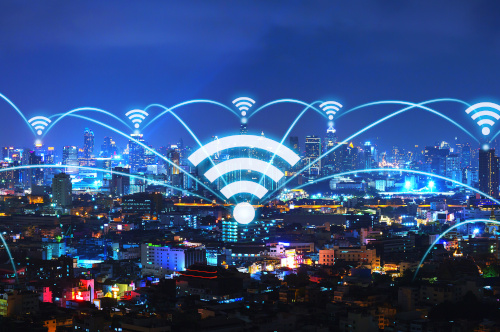Americans overwhelmingly believe that high-speed internet access is a basic necessity, according to a new survey from Kajeet. Additionally, this need for connectivity is not new, as nearly 75 percent of respondents believed high-speed internet was important even before the pandemic began more than two years ago. The survey also finds that 64 percent of U.S. adults are worried about their ability to pay for a high-speed internet connection at home, drawing attention to the opportunity gap and homework gap many students face.
The digital divide–the gap between people who have access to modern information and communications technology and those who do not – is a major issue. Access to the internet has become a necessity in almost all aspects of life today, including education, healthcare, remote work, etc. According to the Federal Communications Commission (FCC), however, an estimated 14.5 million Americans lack home broadband access. For these 14.5 million people, not having access to the internet is a disadvantage.
High-Speed Internet is a Necessity, Not a Luxury
In the survey, 7 in 10 respondents (70 percent) said they agree with the statement “high-speed internet is a basic necessity,” with 37 percent saying they “strongly agree” and 33% saying they “somewhat agree.” Only 11 percent said they “somewhat disagree” or “strongly disagree.” When asked if they agree with the statement that governments (local, state, federal) should provide free high-speed internet connectivity to all Americans, 43 percent said they “strongly agree,” 29 percent said they “somewhat agree,” and 13 percent said they either “somewhat disagree” or “strongly disagree.”
Student Access to High-Speed Internet Was Critical Before the Pandemic
When the COVID-19 pandemic shut down the world in 2020, the digital divide and the critical need for high-speed internet connectivity, especially for learning, became much clearer to many people. But this need existed well before the national health crisis. When asked how important or unimportant respondents felt that at-home, high-speed internet access was for K-12 students’ learning before the pandemic, an overwhelming majority (70 percent) of respondents said it was important. When asked the same question about the importance of high-speed internet connectivity for learning post-pandemic, the same number of respondents (70 percent) said it was important.
Yes, I Need It, but Can I Afford It?
While a majority of Americans (70 percent) said they believe high-speed internet is a basic necessity, more than 6 in 10 (64 percent) said they are worried about their ability to pay for a high-speed internet connection at home. When asked how worried they were, 27 percent said “very worried,” 37 percent said “somewhat worried.” When asked what three activities would pose the greatest struggle if they were to lose high-speed internet at home, 42 percent said business/work, 38 percent said healthcare, 35 percent said accessing smart home devices and systems and 35 percent said schoolwork.
- Top edtech at ISTELive 23 - July 7, 2023
- Half of teachers expect AI to make their jobs more challenging - July 6, 2023
- A small number of teachers can double the racial gap in disciplinary action - July 3, 2023


